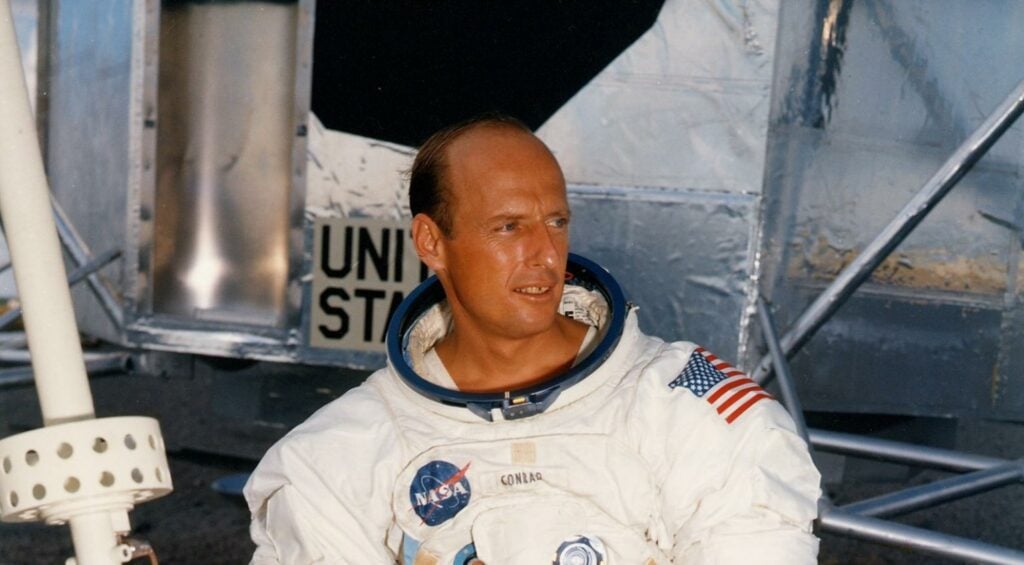Pete Conrad was an American NASA astronaut, aeronautical engineer, naval officer and aviator, and test pilot who led the Apollo 12 space mission, becoming the third person to walk on the Moon. In 1962, Conrad was chosen for NASA’s second astronaut class. But do you know what Pete Conrad said when he first arrived on the moon?
Commander of Apollo 12, Pete Conrad, said his first words on the moon, “Whoopie! Man, that may have been a small one for Neil, but that’s a long one for me,” to win a $500 bet with an Italian reporter. He never got the money.
Who is Pete Conrad?
Charles Pete Conrad Jr. was born on June 2, 1930, in Philadelphia, the third child and first son of wealthy real estate and banking couple Charles Conrad and Frances De Rappelage Conrad.
Conrad was a bright, intelligent young man who struggled with his schoolwork. He suffered from dyslexia, a poorly understood condition at the time. Conrad went to the Haverford School, a private boarding school in Haverford, Pennsylvania, where previous generations of Conrad’s had gone. Despite his family’s financial difficulties, his uncle Egerton supported his continued education at Haverford. Pete’s dyslexia, on the other hand, continued to stymie his academic efforts. Haverford expelled him after he failed the majority of his 11th-grade exams.
Conrad’s mother refused to believe that her son was stupid and set about finding him a good school. She discovered the Darrow School in New Lebanon, New York. Conrad learned how to use a systems approach to learning there and thus discovered a way to work around his dyslexia. Despite repeating the 11th grade, Conrad excelled at Darrow and was admitted to Princeton University with a full Navy ROTC scholarship after graduating in 1949.
Conrad began working at the Paoli Airfield near Paoli, Pennsylvania, when he was 15 years old, bartering lawn mowing, sweeping, and other odd jobs for airplane flights and occasional instructional time. He learned more about the mechanics and operation of aircraft and aircraft engines before moving on to minor maintenance work. When he was 16, he drove nearly 100 miles to assist a flight instructor whose plane had to make an emergency landing. Conrad repaired the plane by himself. Following that, the instructor gave Conrad the flight lessons he needed to earn his pilot’s license before graduating high school. (Source: Britannica)
Pete Conrad’s NASA Career
On September 17, 1962, Conrad became a member of NASA’s second group of astronauts, known as the New Nine. As one of the best pilots in the group, he was one of the first to be assigned a Gemini mission.
Conrad was assigned to command the backup crew for the first Earth orbital test flight of the entire Apollo spacecraft, including the Lunar Module, into low Earth orbit in December 1966.
Apollo 12 was launched on November 14, 1969, with Conrad as Commander, Dick Gordon as Command Module Pilot, and Alan Bean as Lunar Module Pilot. A series of lightning strikes just after liftoff temporarily knocked out power and guidance in the Command Module, making the launch the most terrifying Apollo program. (Source: NASA Fandom)
Image from WeHackTheMoon
